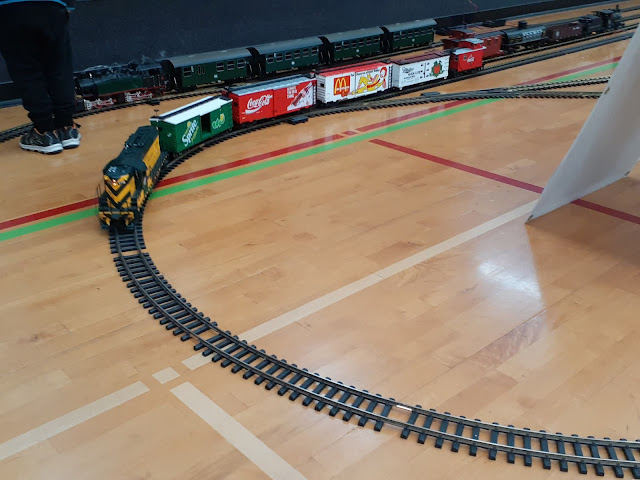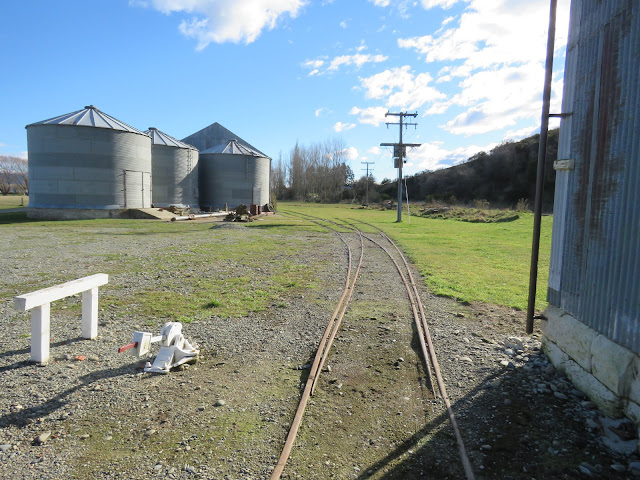The OO9 Scale Saxford Light Railway.
Last Saturday I managed to get to Timaru to visit the Alpine Energy Railway Expo. The show was held at Roncalli College Gymnasium.
This was my first time going to this show and it was definitely worth the drive. There were 18 layouts on show with a mix of N, American and European HO, OO9, OO, G, large scale and even a huge Tomy Trains layout. All the layouts were great and built to a high standard.
The freelance scale HO scale Zealandia. This layout is based on a riverport in New Zealand and is set in the 1950's.
This show is also a fundraiser for Hospice South Canterbury and last year raised $2500 for the hospice. A great effort by the organisers.
A train on the Christchurch Garden Railway Group's G scale floor layout.
Montigy is an HO scale French layout that is operated using digital control via a tablet.
040 Trains and Models from Ashburton and Toot Toot Trains from Invercargill had stalls at the show and looked to be doing some good business. You can find the websites for 040 trains here and for Toot Toot here. Good work to Toot Toot for making the long trek up from Invercargill.
There were also some second hand stalls with model trains of varying quality, scales and eras for sale.
Train shows are one of the main ways we expose people to our awesome hobby. While there is a market for second hand trains I don't think having a table laden down with poor quality, old and crusty trains is the image we as a hobby are trying to portray. Imagine how disappointed you would be if you were new to the hobby and bought a loco, a few wagons, some track and an old controller and on getting home find they don't work or run poorly. On the other hand getting a loco, laying some track, hooking up a controller and running a train for the first time can be a fantastic feeling. Either way these stalls were very busy with model railroaders selling their unwanted items and others picking up some bargains.
The OO scale River Valley railway.
Above and below: The HO scale Warnerville & Derrick Town layout. This layout is based in the 1950's and is divided into two scenes including a film set and an oil town.
The Marklin Modular Digital Group's German themed HO scale layout. I especially liked the smoke effects from some of the steam locomotives. The HO scale Parklands County American diesel era layout.
The HO scale Parklands County American diesel era layout.
Above and below: The freelanced N scale Eweburn Central Railway.
My favourite layout of the show was the OO9 scale Saxford Light Railway, a narrow gauge layout set in the early preservation era. This is a neat little oval layout that is still under construction. I'm a bit biased because I do like narrow gauge layouts. What surprised me is the amount of locomotives and rolling stock on the layout that were purchased ready to run. I look forward to seeing the progress of this layout.
Above and below: The OO9 Scale Saxford Light Railway.

The only negative I had was the lack of eftpos at the door. Other than that this was a great show. The gymnasium was packed with visitors and all seemed to be enjoying themselves which is always a good sign. Actually there were so many visitors I wasn't able to get good photos of some of the layouts. There also seemed to be a good number of people spending money at the trade stands. A big shout out to the organisers and all the modellers and stall holders that attended. It can be a big ask to travel, set up the layouts and stalls and man these throughout the weekend but you all did a great job.
I will definitely be back next year.
And that's about it.

























































